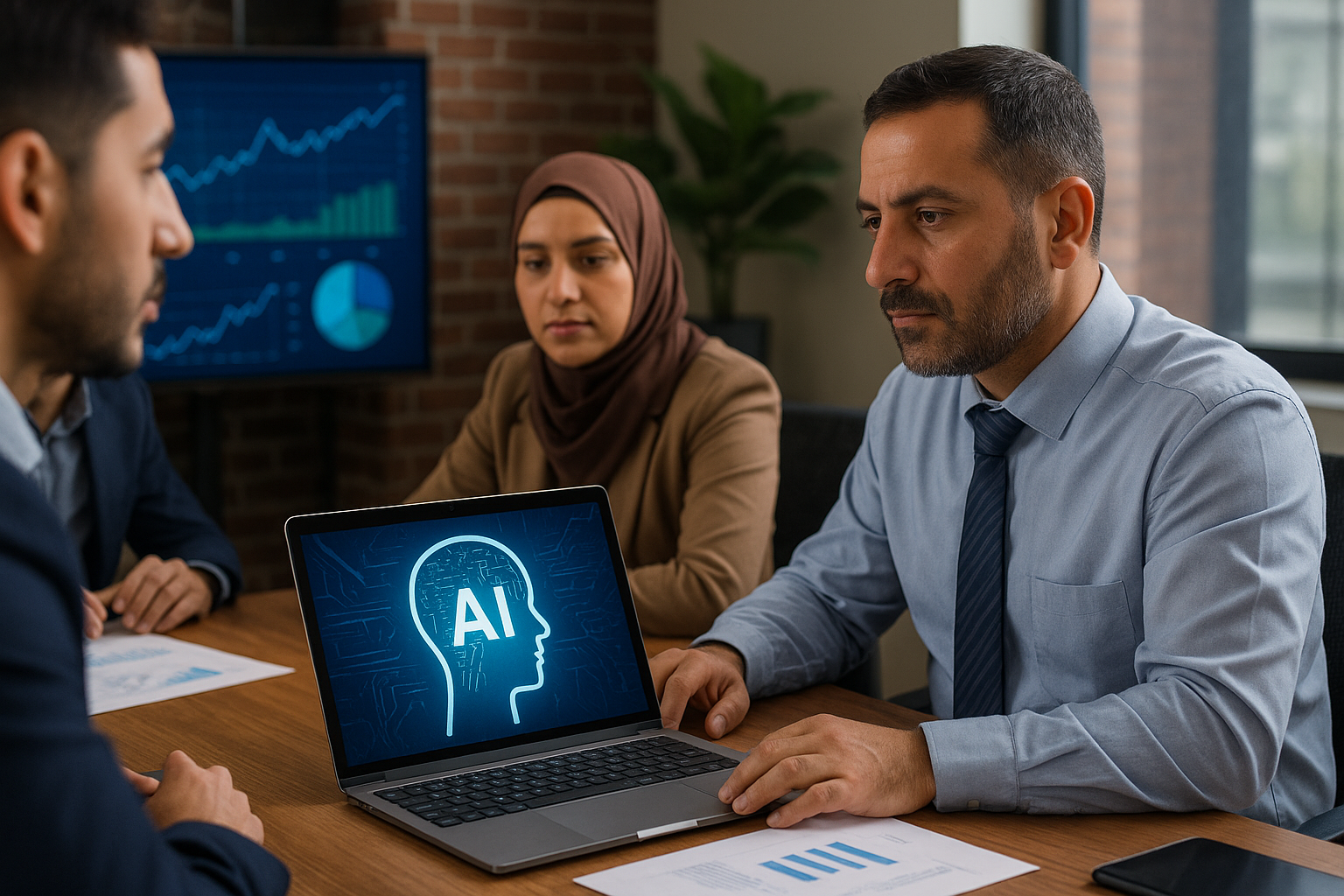AI integration and digital leadership boosts innovation in resource-constrained economies
The findings reveal that digital leadership directly enhances sustainable innovation, demonstrating a strong positive relationship between leadership quality and an organization’s ability to innovate responsibly. Leaders who encourage ethical technology adoption, foster digital literacy, and create psychologically safe environments drive stronger innovation outcomes.

A new study has revealed that artificial intelligence (AI) and digital leadership can together transform how small and medium-sized enterprises (SMEs) innovate under severe economic constraints. The research provides rare empirical evidence from Iraq, a country where SMEs face institutional fragility, infrastructure deficits, and limited access to technology.
Published in Sustainability and titled "Digital Leadership, AI Integration, and Cyberloafing: Pathways to Sustainable Innovation in SMEs Within Resource-Constrained Economies," the study investigates how leadership, technology, and human behavior combine to promote sustainable innovation. It offers a comprehensive behavioral-tech framework grounded in the Job Demands–Resources (JD-R) model and the Technology Acceptance Model (TAM), advancing global discussions on digital transformation in developing economies.
AI-enabled leadership in fragile economies
The study states that digital transformation is not solely a technological issue but a leadership challenge that defines whether innovation can thrive in fragile economies. By surveying 400 employees from service-sector SMEs in Northern Iraq, the authors examined how digital leadership influences sustainable innovation and employee behavior, especially in relation to AI integration and cyberloafing, non-work-related internet use during office hours.
The findings reveal that digital leadership directly enhances sustainable innovation, demonstrating a strong positive relationship between leadership quality and an organization's ability to innovate responsibly. Leaders who encourage ethical technology adoption, foster digital literacy, and create psychologically safe environments drive stronger innovation outcomes. The research further establishes that female employees respond more positively to inclusive digital leadership than their male counterparts, indicating that gender-responsive leadership contributes significantly to sustainable innovation outcomes.
The study's results align with the United Nations Sustainable Development Goals (SDGs), particularly SDG 8 (decent work), SDG 9 (industry, innovation, and infrastructure), and SDG 12 (responsible consumption and production). In economies such as Iraq, where SMEs provide over 40 percent of employment yet remain under-resourced, the authors argue that digital leadership functions as a strategic survival tool, not merely a management style.
Reframing cyberloafing as a cognitive resource
Traditionally viewed as counterproductive, cyberloafing is reinterpreted in this study as a conditional behavioral resource when properly managed. The authors differentiate between counterproductive and restorative cyberloafing, the latter referring to short, socially interactive online breaks that allow employees to recover mental energy and sustain focus.
Using statistical modeling, the study finds that social cyberloafing positively influences innovation when conducted within reasonable limits. Employees who engage in bounded social media interaction during work hours show improved creativity, mood, and problem-solving abilities. In this light, cyberloafing emerges as a micro-recovery mechanism aligned with the JD-R model's notion of personal resources.
However, the study emphasizes that this behavior's impact varies based on education level and digital literacy. Employees with advanced degrees benefit the most, showing a strong positive link between restorative cyberloafing and innovation performance. By contrast, diploma-level or vocationally trained employees experience diminishing returns due to unstructured use of online time.
This distinction marks a theoretical breakthrough: cyberloafing is not inherently harmful, but its value depends on leadership guidance, workplace norms, and employee competence. The authors recommend that SMEs develop restorative cyberloafing policies—structured online micro-breaks that refresh workers' cognitive energy without undermining productivity. These policies, they argue, could reduce burnout and enhance creativity, aligning with SDG 8's call for decent and sustainable work environments.
AI integration as a moderator of innovation
The integration of AI is shown to amplify digital leadership's impact on sustainable innovation. The study reveals that AI moderates the relationship between leadership and innovation, magnifying positive effects by reducing human workload, improving decision-making, and enhancing resource management.
AI integration not only strengthens innovation outcomes but also helps mitigate operational inefficiencies. SMEs leveraging AI for demand forecasting, automation, and analytics reported significant efficiency gains, including reductions in waste and overproduction. These findings underscore AI's contribution to SDG 12 (responsible consumption and production) by promoting resource optimization.
Demographically, AI benefits were strongest among employees aged 26 to 35 and those holding master's degrees, reflecting the role of digital literacy and human capital in determining AI's success. For older employees, the advantages were less pronounced, highlighting the need for inclusive upskilling programs to bridge generational gaps in AI adoption.
Crucially, the authors warn that AI's potential is constrained by ethical and governance challenges. In the absence of formal AI ethics guidelines, SMEs risk reinforcing bias and exclusion. The study calls for transparent, responsible AI policies that ensure technology augments human creativity rather than replaces it.
Redefining the path to sustainable innovation
The researchers propose a behavioral-tech leadership model where sustainable innovation results from the dynamic interaction of digital leadership, human behavior, and AI integration. Leadership acts as the catalyst, cyberloafing functions as a behavioral mediator, and AI serves as a technological moderator that amplifies outcomes.
By redefining cyberloafing as a conditional resource rather than a deviant act, the study extends the JD-R model to encompass digital-era employee behaviors. At the same time, by embedding AI as an enabler rather than a substitute for human intelligence, it refines the Technology Acceptance Model to suit contexts of institutional fragility.
The findings also carry strong policy implications. The authors recommend that governments and development agencies in resource-constrained economies prioritize digital leadership training, AI literacy, and inclusive workforce policies. Incentivizing SMEs to adopt ethical AI practices, implement restorative work policies, and expand digital upskilling could significantly advance regional competitiveness and align local business ecosystems with global sustainability targets.
For SME managers, the evidence suggests that leadership investments are as crucial as technology investments. Ethical digital leadership, combined with human-centered AI strategies, can enhance innovation, reduce employee stress, and ensure balanced productivity even under severe resource limitations.
- FIRST PUBLISHED IN:
- Devdiscourse









